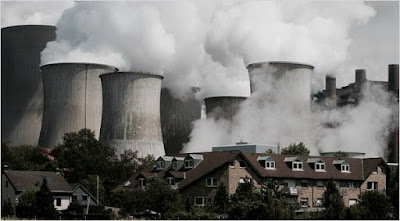6 ideas to aid the world water crisis
How important is clean drinking and potable water for household use? 1/3 of the world’s population doesn’t have access to clean drinking water. Water used for cooking, cleaning and bathing must also be clean, as many diseases (especially in developing countries) are water-borne diseases, from bacteria or other microorganisms in unclean water (see: climatechange/health_impacts/waterborne_diseases/). Household (or village) is not currently safe for most of the world's developing countries. In fact, over 10% of the world’s population doesn’t even have access to clean potable water. Meanwhile, over 70% of the earth is covered in water.
1(a). The most immediate way to help the world water crisis is to provide filters to people who lack clean water, primarily to the 3rd world and low-income people of the world. This takes relief funds, both established by governments and private charities. There are many promising and emerging water purification technologies such as LifeStraw. "LifeStraw technology was originally introduced in 2005 as an emergency response tool to filter water..." (see: lifestraw)
(more clean water technologies are described here: water-purification-new-technologies-change-world)
Established, available filter technologies also range from: activated charcoal (or other carbon-based materials) to new nanotechnologies which use materials such as graphene, silver and titanium which are made into microscopic filtration membranes. There are a variety of very promising uses of graphene in newly designed and developed filters -(can-graphene-make-the-worlds-water-clean).
More media on nanotechnologies (including graphene materials used in combination with other nanomaterials):
Another great example of the use of graphene in water filters and water systems comes from the company G2O: g2o
“G2O’s graphene filter technology addressing a $2Bn market and reducing energy costs by up to 97%. In addition to use in filter technologies, this company sees applications for its graphene technology in:
- Environmental maritime applications in aquaculture and oil & gas production
- Drain water and waste water management
- Desalination of seawater”
1(b). Develop more water treatment (storm water, river/ stream/ lake water, industrial use water, sewage) plants (waste-water/treatment)
 2. Improve and create new rainwater collection systems such as the ones found here: rainharvest
2. Improve and create new rainwater collection systems such as the ones found here: rainharvest
3. Water reclamation:
- waste-water/reuse-recycling
- tinyurl.com/j2wsbv8 - "To effectively capture and prepare water for reuse will require a greater level of coordination between municipal agencies (water/wastewater), an understanding of the economic drivers influencing treatment or reuse, and the means of paying for the required infrastructure."
4. Develop more desalination plants...(please check the desalination article on our website: desalination-clean-water-for-a-thirsty-world and also desalination-quest-quench-worlds-thirst-water
5. Improve water infrastructure (reservoirs, aqueducts, piping networks…) and 6. Utilities (especially in 3rd world countries) to further develop the use of micro-payments via mobile/ smart phones (also great for solar electricity, in addition to water)



